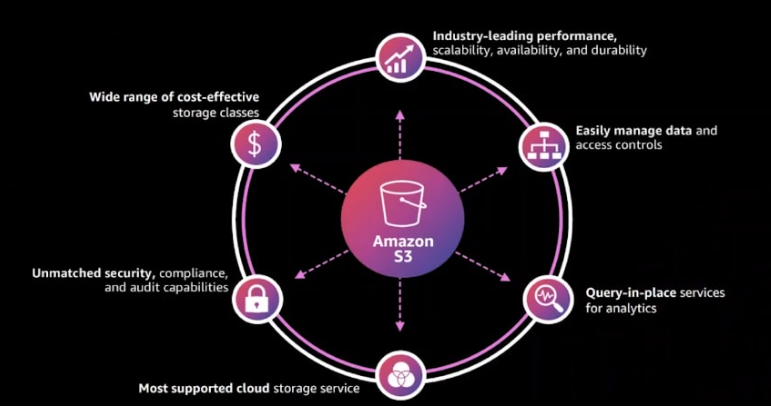8.2 Best Practices for High Performance on AWS S3 Bucket
To achieve high performance on AWS S3 buckets, it’s crucial to understand and implement best practices that optimize data storage, access, and management. Here are some key strategies:

1. Choose the Right Storage Class
- Understand Storage Classes: AWS S3 offers several storage classes like S3 Standard, S3 Intelligent-Tiering, S3 Standard-IA (Infrequent Access), and S3 One Zone-IA. Choose the one that aligns with your access patterns and cost considerations.
- Lifecycle Policies: Implement lifecycle policies to automatically transfer data to more cost-effective storage classes as it ages or its access patterns change.
2. Optimize Data Transfer
- Use S3 Transfer Acceleration: For faster uploads over long distances, S3 Transfer Acceleration uses AWS Edge locations to speed up data transfers to and from S3.
- Multi-Part Uploads: For large files, use multi-part uploads to parallelize uploads, making them faster and more reliable.
3. Efficient Data Retrieval
- Use Amazon CloudFront: Integrating S3 with CloudFront, AWS’s CDN service, can significantly improve data retrieval times by caching data closer to the users.
- Selective Retrieval: Use features like S3 Select to retrieve only a subset of data from an object, which can reduce the amount of data transferred and lower costs.
4. Key Naming Patterns
- Avoid Sequential Keys: Sequential or predictable key names can lead to uneven distribution of requests, causing potential hotspots. A randomized or hashed key naming pattern can distribute the load evenly across S3 partitions.
- Hierarchical Structures: Organize keys hierarchically but avoid deep nesting as it might complicate management and access patterns.
5. Concurrency and Request Rate
- Understand Request Rate Limits: S3 buckets can support a high request rate (thousands of requests per second). Understand these limits and design your application to scale accordingly.
- Use Parallel Requests: For high throughput, make multiple parallel requests to S3. This is particularly effective for reading and writing small objects.
6. Security and Access Control
- Implement IAM Policies: Use AWS Identity and Access Management (IAM) to control access to your S3 resources securely.
- Bucket Policies and Access Control Lists (ACLs): Define granular access controls using bucket policies and ACLs to enhance security.
7. Monitoring and Logging
- Enable AWS CloudWatch: Use CloudWatch to monitor your S3 buckets and receive alerts for specified events or thresholds.
- S3 Access Logs: Enable access logging for audit trails and to analyze access patterns for performance tuning.
